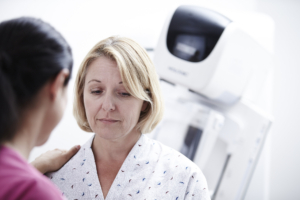Women’s healthcare is in crisis: Investment is key
By Tanja Brycker, Vice President, Strategic Development, Breast & Skeletal Health and Gynaecological Surgical Solutions, Hologic
The world faces an emergency in women’s health. New data shows billions of women were untested for life-threatening conditions, emotional health is worsening and nearly 1 billion women are living with physical pain.
These findings are from the Hologic Global Women’s Health Index Year 3 data[i], created by women’s health innovation company, Hologic, in partnership with Gallup. The data highlight just how lacking preventative care, health and safety, and emotional wellness are for women in all regions of the world.
The report – one of the largest annual surveys on women’s well-being – utilizes interviews with more than 147,000 women and men in 143 countries and territories, representing the voices of 97% of the world’s women and girls aged 15 and older. And one thing is clear: women and girls are suffering, and leaders and healthcare providers need to take transformative action to better serve them.
Despite the global recovery from COVID-19, the Index reveals that women’s health is, at best, stagnant and at worst, deteriorating year on year – emotional health is getting worse, gaps between rich and poor nations and urban and rural communities continue to grow, and the risk of maternal and foetal mortality is rising. It is only through actions that drive awareness, access, affordability, attitudinal shift and advocacy that we can begin to improve women’s health.
When it comes to Europe specifically, while women’s health is relatively strong in some European countries, this year’s Index highlights that important unmet needs remain. For example, many women across the EU aren’t getting tested for potentially life-threatening conditions, have health problems that interfere with normal activities or report feeling worried, stressed or sad.
The conclusion is clear, countries across Europe and indeed, the world, need to invest in women’s health to drive economic progress and growth, and to ensure women have the best opportunities to live healthier lives.
Alarming findings show no improvement in preventive care
The Index, which included interviews with more than 14,000 women in the EU, shows that most women didn’t receive key preventative testing in the past 12 months. This means that billions of women worldwide went untested for conditions such as high blood pressure, diabetes, cancers, and sexually transmitted diseases or infections (STDs/STIs).
In the EU, the Index showed that only 47% of women were tested for high blood pressure, 24% for diabetes and 20% for any type of cancer. With health issues like heart disease and breast cancer being leading illnesses impacting the lives of women, the fact that over half did not receive any preventative testing is inexcusable. These results are staggering alone, but when compared to the previous two reports they become alarming. The EU has seen no improvement in the preventative care dimensions since the first report was published in 2021 during the grip of a pandemic, when preventative testing was essentially put on hold.
Investments in preventative care today will change lives, support greater development and address longstanding inequities. The technology and innovations to help women live longer, healthier lives are already here, with advancements in mammography, gynaecological treatments, sexual health testing and more. Europe can do better for its communities and economic well-being by providing women the opportunities to be tested for preventative diseases.
Barriers that keep women from seeking health care
There are many variables at play when it comes to how women take care of themselves, which include food security, emotional health, and safety. These can all be barriers that keep women from seeking preventative care worldwide – and the EU is no exception.
The Index, which provides empirical data and is clear in its findings, reveals that 13% of the women interviewed in the EU struggled to afford food in the past 12 months, and that 10% had challenges affording adequate housing. For women who are focused on meeting their individual and family’s basic needs, seeking preventative care or treatments might not be a priority.
Additionally, overall, many women reported feeling negative emotions during much of the previous day, and globally were 20% more likely to say they experience sadness daily. In the EU, the survey showed that during the previous day, 39% of women felt worried, 34% felt stressed, and 26% felt sad. These findings are particularly important, because negative emotions can become unhealthy and signal more serious conditions such as anxiety and depressive disorders or other mental health diagnoses. These feelings can keep women from seeking help, and there is consistent evidence that a negative emotional state can affect cardiovascular health and heighten risk factors for other noncommunicable diseases with which mental disorders can co-occur, such as diabetes and cancer.[ii],[iii]
These factors contribute to the low percentage of women being regularly tested for preventable diseases. When addressing the physical well-being of women, governments must take a holistic approach in order to also address the emotional and safety barriers that keep women from accessing care.
It is time to do better for all women and develop actionable steps to address these issues. To avert an impending crisis, the issues highlighted by the Index report must be addressed in the global arena, such as the World Economic Forum, as well as at the regional and country level.
Improvement is possible by advancing Awareness, Access and Affordability
Meaningful improvement to women’s health care can be achieved if world leaders, healthcare professionals and advocates improve awareness, access and affordability of healthcare.
Affordability
Leaders must:
- Invest in and deliver on women-centric policies and commitments that include the voices of those affected in the decision-making process
- Prioritize legislation and funding that advances women’s health.
An example of this is the endorsement and prioritization of an overarching European Women’s Health Policy. Australia and the UK already have these policies in place.
Studies show that a country’s economy and performance depend upon how they educate and provide for women and girls. In fact, the McKinsey Health Institute recently shared that countries and institutions that invest in women’s health have a positive return, as for every $1 invested, there is a projected $3 or more in economic growth globally.[iv] In higher income settings, the return can be as high as $3.50.4
Access
Across the globe, investments that provide or improve access to preventative care must be prioritized. This single imperative will allow prevention of potentially life-threatening conditions. It will also reduce the burden on overstretched healthcare systems. Studies in high-income countries have shown that treatment for cancer patients who have been diagnosed early is two to four times less expensive compared to treating people diagnosed with cancer at more advanced stages.[v] This confirms the adage that ‘prevention is better than cure’. It will set the stage for women today to better access care for their emotional and physical wellbeing, while improving opportunities for the next generation of girls and young women.
Awareness
Healthcare professionals and women’s health advocates must build awareness amongst women about the importance of preventative care and its availability. Education is critical to the success of any policy, because without public awareness and understanding, even the best laid plans will fail. Alongside providing education and awareness, advocates must ensure that women’s health and safety are prioritized in their communities to help reduce the barriers to care.
The Year 3 Index data is clear – we must make changes. Tools like the Hologic Global Women’s Health Index enable accountability of our world leaders and complement global commitments toward improving overall health and well-being. What gets measured, can be improved. Let’s seize the opportunity and work together to make a true impact in the lives of European women and girls today.
What can you do?
One easy action is to bring your personal engagement for women’s health to the fore – advocate your sitting Member of European Parliament for a European Women’s Health policy. Alternatively, and for those outside the EU, contact your local political representative and ask what they and the current government are doing to address the issues of women’s health.
Many voices make a chorus!
About the author
Tanja Brycker joined Hologic in 2018 and serves as Vice President of International Strategic Development for Breast and Skeletal Health, and for Gynaecological Surgical Solutions.
In the preceding two decades, she held senior leadership roles in a number of global healthcare companies where she pursued a passion for advancing patient outcomes through high quality medical innovation and excellence in the commercial partnership with healthcare providers. Her desire to improve patient experience is born from over ten years as a midwife and critical care nurse where she witnessed, first hand, the benefit of prevention over cure and how medical technology can definitively enhance health outcomes. Tanja is passionate about driving and improving earlier detection, diagnosis and treatment of women’s health issues.
——————————————
[i] Hologic Global Women’s Health Index MISC-09031. https://hologic.womenshealthindex.com/sites/default/files/2024-01/MISC09031_HGWHI_Y3GlobalReport_Final_Digital.pdf Last accessed 29 January 2024
[ii] Levine GN, Cohen BE, Commodore-Mensah Y, et al. Psychological health, well-being, and the mind-heart-body connection: A scientific statement from the American Heart Association. Circulation, 2021;143(10):971-973.
[iii] Stein DJ, Benjet C, Gureje O, et al. Integrating mental health with other non-communicable diseases. BMJ, 2019; 364:l295
[iv] Ellingrud K, Pérez, L, Petersen, A, et al. Closing the women’s health gap: A $1 trillion opportunity to improve lives and economies. McKinsey Health Institute, 2024; https://www.mckinsey.com/mhi/our-insights/closing-the-womens-health-gap-a-1-trillion-dollar-opportunity-to-improve-lives-and-economies Last accessed 26 January 2024.
[v] World Health Organization. Early cancer diagnosis saves lives, cuts treatment costs. https://www.who.int/news/item/03-02-2017-early-cancer-diagnosis-saves-lives-cuts-treatment-costs last accessed 29 January 2024




